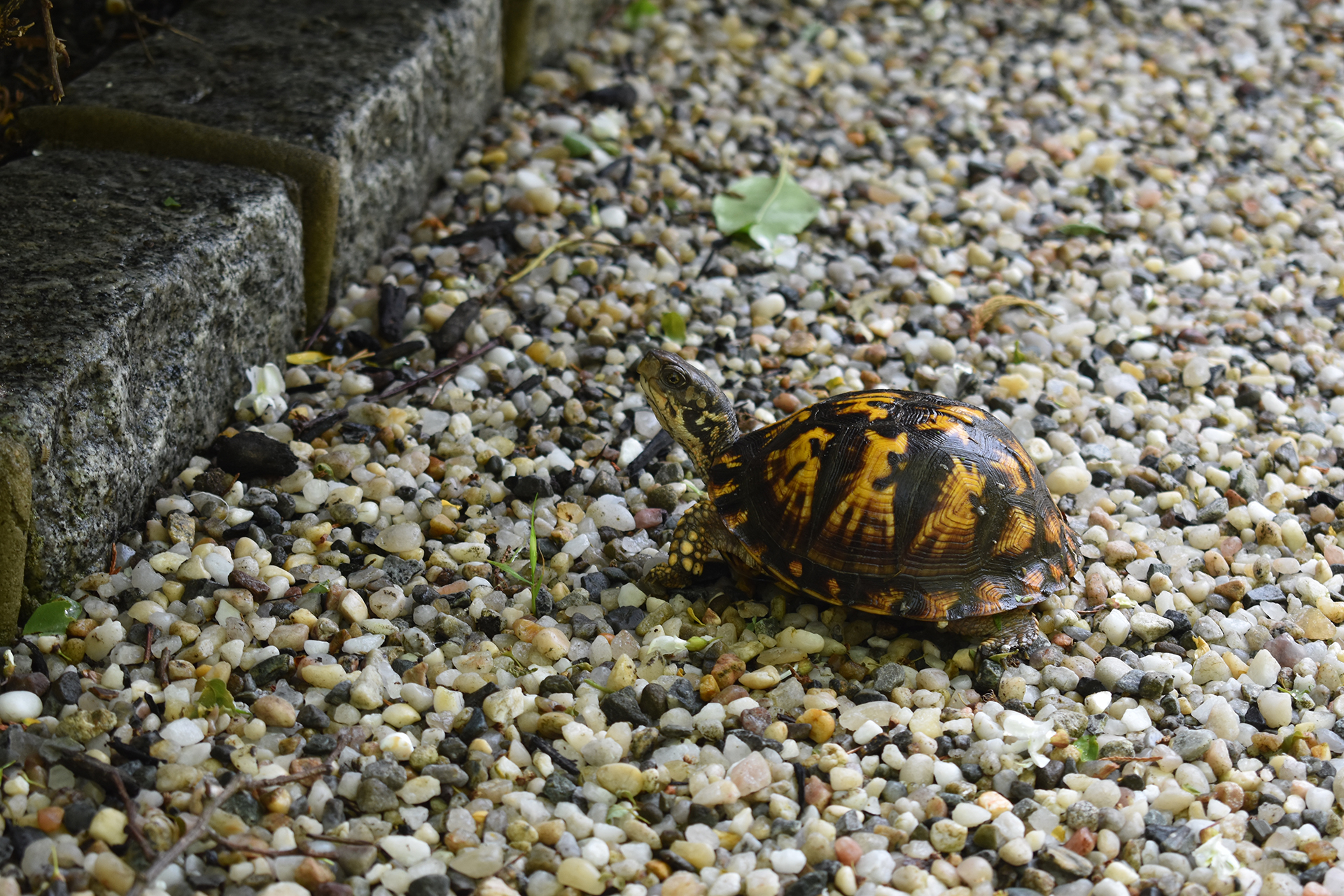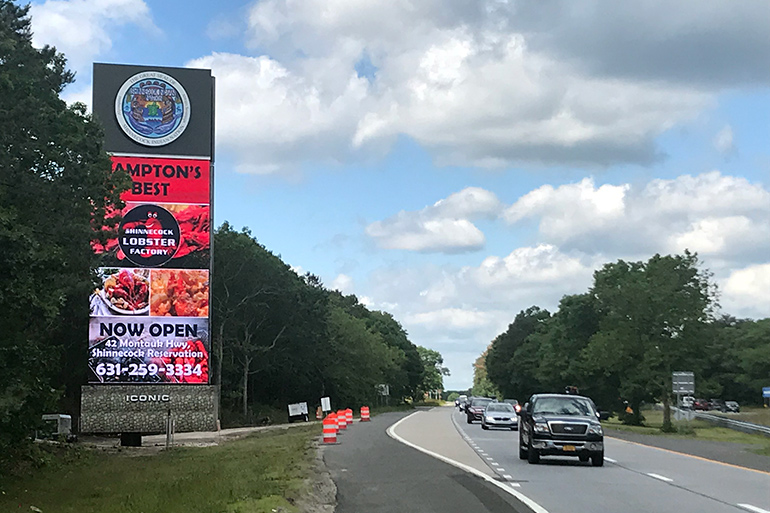Watch Out For Turtles!

In the fable “The Tortoise and the Hare,” Aesop taught us that slow and steady wins the race. But there are times, like right about now, when being slow and steady is a definite liability.
We are talking here about turtles, especially eastern box turtles, which so often end up being crushed as they try to cross the East End’s busy roads. The carnage can be doubly costly this time of year, according to Xylia Serafy, an environmental educator at the South Fork Natural History Museum in Bridgehampton, because the turtles are on the move, especially during late May and June, as they seek a suitable place to lay their eggs.
How bad is it? Let’s just say that box turtles, once relatively abundant here on the East End, have now been declared a species of special concern by the New York State Department of Environmental Conservation, which means they could soon disappear completely from Suffolk County.
To be sure, errant drivers aren’t the turtles’ only enemy. Natural predators such as foxes or raccoons can rob their nests of eggs. The steady drumbeat of development has restricted and destroyed much of their natural habitat hereabouts. Landscapers rushing to get a lawn cut in time for the homeowners’ weekend arrival might accidentally run one over with a lawn mower.
Biologists believe the typical box turtle could have a 50-year lifespan, but there is a documented case of one living 124 years, Serafy said, making the reptile “the longest living vertebrate on North America.”
When you encounter a box turtle in the open, they shouldn’t be hard to miss, although for some reason drivers insist on making mincemeat of them. They have a domed shell, which typically has a pattern of black or dark brown interspersed with yellow or orange markings, although sometimes they are a duller brown tone.
The more brightly colored specimens stand out like a jack-o-lantern when they cross a green lawn or blacktop road, but they blend in with their surroundings quickly when they crawl among the leaf litter in the woods, where they are likely to find an abundance of food, including beetles, slugs, and plant matter.
The box turtle gets its name because its lower shell is hinged, allowing it to seal itself in a protective box when threatened. Unfortunately, that behavior doesn’t work so well on the road.
Serafy said there is good reason the turtles resolutely insist on crossing the road. “There is a part in their brain that recognizes where they were hatched,” she said. “Since they survived, they figure that is a suitable place to lay their eggs.”
Drivers who see a turtle crossing the road can lend them a hand by pulling over and helping them across the road. Because the animals know where they are going — and will persist in traveling that direction — it is essential to carry them across the road and not bring them back to the side from which they started.
Female snapping turtles, which spend most of their lives in ponds, are also often seen crossing the roads this time of year, searching for a suitable place to lay their eggs. Snapping turtles have a reputation for being nasty, but Serafy noted you’d be irritable too if you were out of your natural habitat and trying to find a safe place to lay your eggs.
That said, it would not be wise to try to pet one’s head because it has powerful jaws that can claim a finger, and a neck that can reach almost all the way to the back of its shell. If you want to assist a snapping turtle, you are probably better off simply stopping traffic and accompanying it across the road, Serafy said. Pulling it by the tail is a definite no-no, because that could injure the animal’s spine.
sjkotz@indyeastend.com



